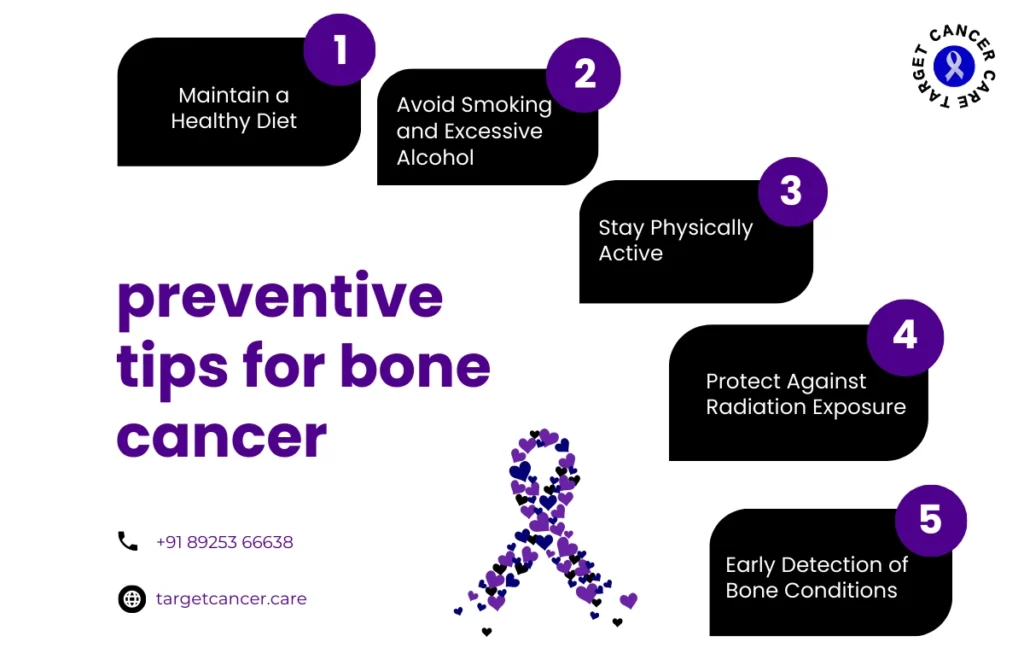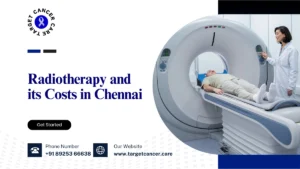Bone cancer is a severe condition that requires specialized care to improve outcomes and enhance the quality of life for patients. Chennai is home to advanced medical facilities and expert oncologists, making it a leading destination for bone cancer treatment in Chennai. This includes comprehensive care for various types of bone cancer, such as primary and metastatic bone cancer. For individuals dealing with related conditions, such as prostate cancer that has spread to the bones, specialized prostate and bone cancer treatment in Chennai is also available. With early diagnosis and cutting-edge treatments, patients can access personalized care to address their unique needs effectively.
What is Bone Cancer?
Bone cancer occurs when malignant (cancerous) cells form in the bones, leading to significant health complications. Understanding the different types of bone cancer is essential, as treatment and prognosis can vary considerably based on the type of cancer diagnosed. For those seeking bone cancer treatment in Chennai, accessing specialized care is crucial to achieve the best possible outcomes.
Types of Bone Tumor
Bone tumors can be benign (non-cancerous) or malignant (cancerous), and both types demand medical attention. Here’s a breakdown:
Benign Bone Tumors:
- Osteochondroma: Common in adolescents, usually pain-free.
- Giant Cell Tumor: Locally aggressive and may recur after removal.
- Enchondroma: Found in cartilage, usually asymptomatic.
- Fibrous Dysplasia: Causes uneven bone development and structural weakness.
Malignant Bone Tumors:
- Osteosarcoma
- Chondrosarcoma
- Ewing’s Sarcoma
- Multiple Myeloma – A blood cancer affecting bone marrow.
While benign tumors are less life-threatening, they can still lead to discomfort, fractures, or deformity. Malignant tumors require urgent and aggressive care. Hospitals in Chennai are proficient in both diagnosis and management of these tumors, offering services like minimally invasive biopsies, orthopedic oncology surgery, and reconstructive procedures.
Knowing the tumor type is crucial in estimating the cost of bone cancer treatment in Chennai, as benign cases might only need surgical removal, while malignant ones often require prolonged care involving multiple therapies. Chennai’s cancer care centers excel at providing accurate tumor classification through histopathology and molecular testing.
Symptoms of Bone Cancer
Bone cancer symptoms often resemble other orthopedic conditions, which can delay early diagnosis. Recognizing the warning signs early is crucial. Common symptoms include:
- Persistent bone pain, especially at night or during activity
- Swelling and tenderness in the affected area
- Weakened bones leading to frequent fractures
- Fatigue or unexplained weight loss
- Restricted mobility in nearby joints
If you’re experiencing any of these symptoms, especially if they persist over time, it’s essential to consult a healthcare provider. In cities like Chennai, oncologists often use X-rays, MRI scans, PET-CT, and bone biopsies to confirm the diagnosis and determine the extent of the disease.
Timely intervention is key to successful bone cancer treatment in Chennai. Awareness of these symptoms can lead to early detection, which dramatically improves survival rates and reduces treatment complexity. Don’t ignore persistent pain or unusual swelling, particularly in young individuals or those with a family history of cancer.
Many top hospitals in the region offer diagnostic packages to screen for cancer, which can help in detecting bone malignancies in their earliest stages.
Causes
The exact cause of bone cancer is still not fully understood. However, certain factors have been identified that contribute to the development of the disease. These include:
- Genetic Mutations: Inherited gene mutations can increase the risk of developing bone cancer. Conditions like Li-Fraumeni syndrome and hereditary retinoblastoma may predispose individuals to bone tumors.
- Previous Cancer Treatments: Patients who have undergone radiation therapy for other cancers may develop bone cancer as a secondary condition.
- Bone Diseases: Some bone diseases, such as Paget’s disease, can increase the risk of bone cancer.
Bone cancer treatment in Chennai takes into account the cause and stage of cancer to provide a personalized and effective treatment plan.

Stages of Bone Cancer
Bone cancer is classified into four stages, each reflecting the cancer’s extent and progression:
- Stage 1: The cancer is localized and has not spread to surrounding tissues or other parts of the body. This stage is easier to treat with surgery or radiation therapy.
- Stage 2: The cancer has begun to grow but is still confined to the bone. Treatment options like surgery and chemotherapy are often effective.
- Stage 3: The cancer has spread to nearby tissues or lymph nodes. More aggressive treatment, including a combination of surgery, chemotherapy, and radiation therapy, is typically needed.
- Stage 4: This is the most advanced stage where cancer has spread to other parts of the body, such as the lungs or liver. At this stage, palliative care is focused on managing symptoms and improving quality of life.
Bone cancer treatment in Chennai often involves a multidisciplinary approach to ensure the best possible outcomes.
Risk Factors
Several risk factors can increase the likelihood of developing bone cancer, although having one or more of these factors does not guarantee that a person will develop the disease:
- Age: Bone cancer is more common in children, teenagers, and young adults, although it can occur at any age.
- Gender: Some types of bone cancer, like osteosarcoma, are more common in males than females.
- Family History: A family history of bone cancer or other cancers can increase the risk.
- Previous Cancer Treatment: As mentioned earlier, individuals who have received radiation therapy for other cancers have a higher risk of developing bone cancer later.
Understanding these risk factors allows healthcare professionals in Chennai to better assess the likelihood of bone cancer and tailor preventive or early detection strategies.
Diagnosis
When a doctor suspects bone cancer, they will begin with a physical examination and diagnostic imaging tests, such as:
- X-rays: Initial imaging to spot abnormalities in bone structure.
- MRI/CT scans: Detailed images to assess the extent of the tumor and whether it has spread to nearby tissues.
- Biopsy: A small sample of the affected tissue is taken for lab testing to confirm whether the tumor is cancerous and, if so, what type of cancer it is.
Early diagnosis is crucial for the successful treatment of bone cancer treatment in Chennai.
Prevention
While it is not always possible to prevent bone cancer, certain steps may reduce the risk of developing the condition:
- Healthy Lifestyle: Maintain a balanced diet rich in calcium and vitamin D to support bone health.
- Regular Exercise: Engage in weight-bearing exercises to strengthen bones and improve overall bone density.
- Avoid Radiation Exposure: Minimize unnecessary radiation treatments, which can increase the risk of developing bone cancer.
- Monitor Family History: If there is a family history of bone cancer or genetic disorders, regular screenings may help detect issues early.
- Early Diagnosis: Regular medical check-ups and awareness of bone cancer symptoms can lead to early detection, improving treatment outcomes.
Bone cancer treatment in Chennai focuses on personalized care, combining advanced therapies like bone infusion cancer in Chennai and prostate and bone cancer treatment in Chennai. By staying proactive about bone health, you can minimize the risk of developing bone cancer. When considering bone cancer treatment cost in Chennai, early intervention typically leads to more effective, cost-efficient care.
Advanced Bone Cancer Treatment
Bone cancer treatment has advanced significantly in recent years, combining surgery, chemotherapy, radiotherapy, and targeted therapies to improve survival rates and preserve function. Each case is evaluated individually by specialized Bone Cancer Treatment Doctors in Chennai, who tailor the approach based on the tumor’s type, size, location, and spread.
Surgical Treatments
- Limb-Sparing Surgery (Limb Salvage):
- The goal is to remove the tumor while preserving the limb’s functionality and appearance.
- Advanced surgical techniques use custom-made prosthetics or bone grafts to reconstruct the bone after tumor excision.
- Amputation:
- Performed when the tumor encases critical nerves or blood vessels, making limb preservation impossible.
- Prosthetic rehabilitation and physical therapy are essential post-surgery for patient mobility.
Radiation Therapy
- Often used in combination with surgery or chemotherapy to shrink the tumor before removal or to destroy remaining cancer cells.
- Advanced techniques like IMRT (Intensity-Modulated Radiation Therapy) and proton therapy focus high-dose radiation directly on the tumor, sparing nearby healthy tissues.
Chemotherapy
- Especially effective in treating aggressive bone cancers like osteosarcoma and Ewing sarcoma.
- Given before surgery (neoadjuvant) to reduce tumor size or after surgery (adjuvant) to destroy any microscopic cancer cells.
Targeted Therapy & Immunotherapy
- These treatments attack cancer-specific genes or proteins.
- Example: Denosumab, a monoclonal antibody, is used in giant cell tumors of bone.
- Immunotherapy enhances the body’s immune system to fight cancer and is emerging as a promising approach in bone cancer care.
Rehabilitation & Follow-up
- Post-treatment care is essential for recovery.
- Physiotherapy restores mobility and strength, especially after limb salvage or amputation.
- Regular imaging and blood tests are vital to monitor for recurrence or metastasis.
Why Chennai is a Preferred Destination for Bone Cancer Care
- Chennai houses multi-specialty cancer centers equipped with modern diagnostic and surgical technologies.
- The presence of skilled orthopedic oncologists, radiologists, and rehabilitation specialists ensures comprehensive care.
- Hospitals offering the Best Cancer Treatment for Bone Cancer in Chennai integrate multi-disciplinary approaches, improving patient quality of life and long-term outcomes.
Several institutions in the city are known for delivering the Best Cancer Treatment for Bone Cancer in Chennai, supported by experienced Bone Cancer Treatment Doctors in Chennai who follow evidence-based protocols.
Diet and Nutrition Tips for Bone Cancer
Proper nutrition plays a key role in supporting individuals undergoing treatment for bone cancer. A well-balanced diet can help strengthen the immune system, reduce treatment side effects, and improve overall well-being.
- Calcium and Vitamin D: Since bone cancer affects bone strength, it is essential to consume calcium-rich foods like dairy products, leafy greens, and fortified cereals. Vitamin D from sources like sunlight, fish, and eggs helps in calcium absorption.
- Protein for Muscle Strength: Protein-rich foods such as lean meat, fish, eggs, nuts, and legumes help repair damaged tissues and maintain muscle mass, especially during treatments like bone infusion cancer in Chennai.
- Antioxidants for Immunity: Fruits and vegetables rich in antioxidants, such as berries, citrus fruits, and leafy greens, can help fight oxidative stress and improve immunity.
- Hydration and Healthy Fluids: Drinking plenty of water, herbal teas, and fresh juices keeps the body hydrated and helps flush out toxins. Patients undergoing bone infusion cancer in Chennai should stay hydrated to support kidney function.
- Avoid Processed and Sugary Foods: Limit processed foods, sugary drinks, and excessive red meat, as they may contribute to inflammation and weaken the body’s ability to recover.
A customized diet plan from a nutritionist can ensure that patients get the right nutrients to support their treatment and recovery journey.
Cost Factors in Bone Cancer Treatment
Understanding the bone cancer treatment cost in Chennai is essential for financial planning. Costs can range widely based on:
- Stage of Cancer: Early-stage cancers are cheaper to treat than advanced stages.
- Type of Treatment: Surgery, radiation, and chemotherapy each have different costs.
- Hospital Choice: Private multispecialty hospitals generally cost more than government or trust hospitals.
- Length of Stay: Complex surgeries or therapies may require extended hospitalization.
- Medications & Diagnostics: High-end imaging, targeted drugs, and frequent tests add to the total cost.
- Post-treatment Care: Includes physiotherapy, prosthetic devices, and follow-ups.
On average, the cost of bone cancer treatment in Chennai can vary from ₹2,00,000 to ₹15,00,000 depending on the factors above. However, many hospitals offer financial assistance, EMI options, and tie-ups with insurance providers to ease the burden.
Several charitable institutions and government schemes also support underprivileged patients. Always request a detailed cost estimate and clarify inclusions during consultation.
By choosing the right facility, you can receive world-class bone cancer treatment in Chennai at a cost that suits your budget and ensures long-term well-being.
Conclusion
Bone cancer treatment in Chennai offers access to world-class medical facilities and highly skilled oncologists who provide personalized care for patients. Early diagnosis and advanced treatment options, including surgery, chemotherapy, and radiation, play a crucial role in improving outcomes. Chennai’s top hospitals are equipped with the latest technologies, ensuring effective treatment for all types of bone cancer. While the bone cancer treatment cost in Chennai can vary depending on the complexity of the case and treatment plan, the city remains an affordable destination for high-quality healthcare. Seek expert consultation to explore your treatment options and get the best care possible.




